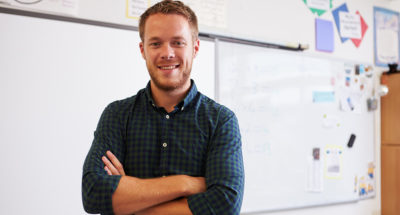
Making a Difference
Students watch a video of Thank You, Mr. Falker and discuss how kind acts take time and effort. They acknowledge this when expressing gratitude.

Students watch a video of Thank You, Mr. Falker and discuss how kind acts take time and effort. They acknowledge this when expressing gratitude.
Students will:
Take a moment to reflect on a time when someone did something kind for you. How did this make you feel? What was the intention behind the person’s kindness?
“Nurturing Gratitude From the Inside Out: 30 Activities for Grades K–8” was originally developed by The Inner Resilience Program, in partnership with the Greater Good Science Center and the John Templeton Foundation.
For the entire curriculum, click here.
Do you notice whether students are expressing gratitude more often after doing this practice? Do they mention the effort that a kind act took?
One study discovered that students who were taught to think gratefully by considering the costs, benefits, and intentions behind a kind act were found, in comparison to a control group, to be happier and more grateful, and to show more grateful thinking. They also were more likely to write gratitude letters to PTA members.
Research suggests that gratitude is good for youth, going hand in hand with greater hope and optimism, higher satisfaction with life, and fewer health complaints. Grateful adolescents also have better relationships, receiving more social support from others and being more kind and helpful in turn.
Like adults, however, students may miss opportunities to express their gratitude. Writing gratitude letters offers them a chance to reflect on the people who have made their life better, and to reach out and connect (or reconnect) with those people.

Do you want to dive deeper into the science behind our GGIE practices? Enroll in one of our online courses for educators!
Comments